U.S. Department of Transportation
Federal Highway Administration
1200 New Jersey Avenue, SE
Washington, DC 20590
202-366-4000
Federal Highway Administration Research and Technology
Coordinating, Developing, and Delivering Highway Transportation Innovations
| TECHBRIEF |
| This techbrief is an archived publication and may contain dated technical, contact, and link information |
| Publication Number: FHWA-HRT-16-017 Date: October 2015 |
Publication Number: FHWA-HRT-16-017 Date: October 2015 |
The California DOT (Caltrans) has used rapid-setting ACM binders since the 1990s to reduce road closure times for weekend replacement in highly trafficked roadways. The research team visited four sites in the San Gabriel Valley in the Los Angeles, CA, area.
California State Route 60W to State Route 71S Interchange
The California State Route 60W to State Route 71S interchange near Pomona, CA, was constructed in 1997 with a commercially available ACM, which Caltrans has described as an 85-percent CSA and 15-percent portland-cement binder. Figures 4–7 show the condition of the pavement. After the pavement had been exposed for 17 years, the research team observed that the pavement was still in very good condition with only occasional spalls noted at the joints, although the research team noted some evidence of surface abrasion.

© The Georgia Institute of Technology
Figure 4. The Route 60W/71S interchange in the Los Angeles, CA, area shows
good performance after 17 years of continual heavy traffic loads.
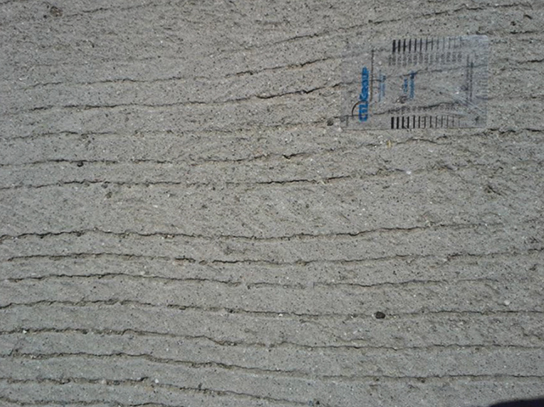
© The Georgia Institute of Technology
Figure 5. A close-up view of the Route 60W/71S interchange in the Los Angeles, CA, area.
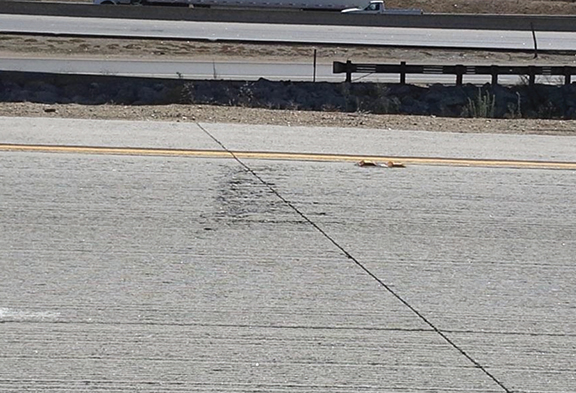
© The Georgia Institute of Technology
Figure 6. The Route 60W/71S interchange in the Los Angeles, CA, area.
(A defect, perhaps caused by a placing or finishing issue, is apparent in the passing lane.)
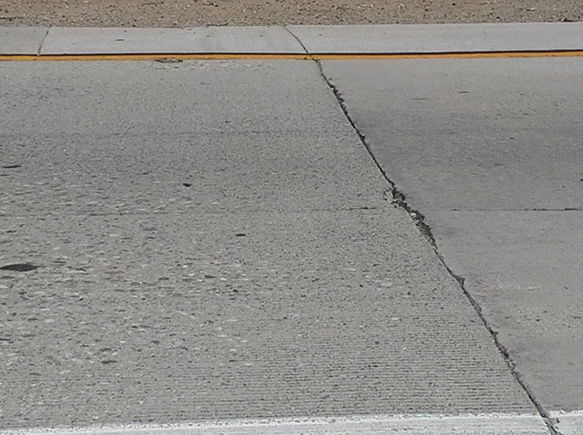
© The Georgia Institute of Technology
Figure 7. Surface wear and minor joint spalling on the Route 60W/71S
interchange in the Los Angeles, CA, area.
California State Route 60E to State Route 71N Interchange
The California State Route 60E to State Route 71N interchange near Pomona, CA, was constructed in 1997 with a 100-percent CSA binder. The pavement required grinding after placement, possibly caused by poor compactability or a set time that was too rapid for proper finishing. Despite this grinding, the research team noted that this pavement was in good condition, as shown in figures 8 and 9.
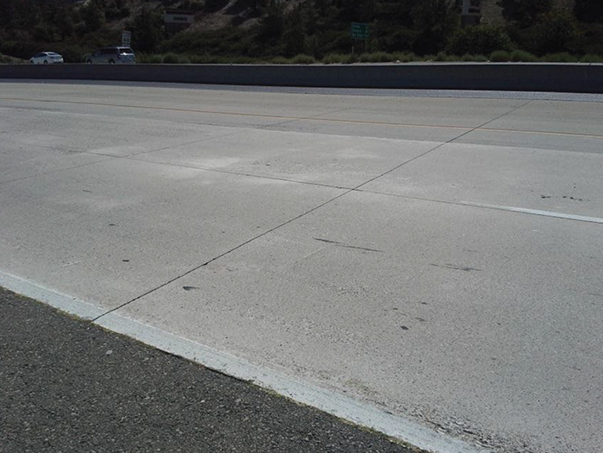
© The Georgia Institute of Technology
Figure 8. The Route 60E/71N interchange in the Los Angeles, CA,
area shows good performance after 17 years of continual heavy traffic loads.
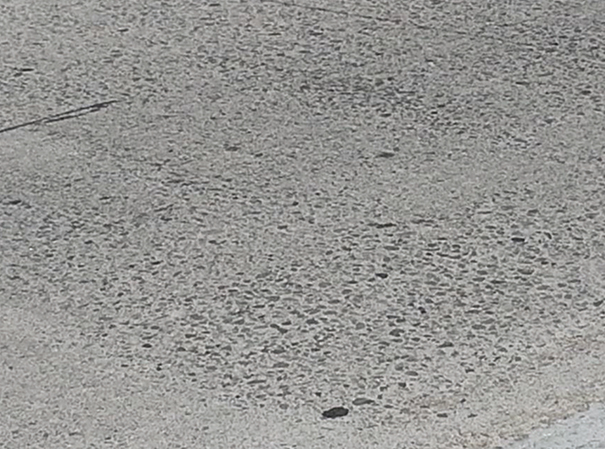
© The Georgia Institute of Technology
Figure 9. A close-up view of the Route 60E/71N interchange in the Los Angeles, CA,
area shows good performance after 17 years of continual heavy traffic loads.
(Surface wear and perhaps early grinding for rideability is apparent.)
U.S. Interstate 10
Forty-five km (28 mi) of U.S. Interstate 10 (I-10) near Los Angeles, CA, also called the San Bernardino Freeway, were placed in 1999 using a 100-percent CSA binder. The research team observed that pavement slabs in both the eastbound and westbound directions at this site showed significantly more damage than did the previous sites. The condition of pavement on I-10E is shown in figures 10 and 11. The slabs showed evidence of damage, including joint deficiencies and spalls. In addition, the research team noticed mid-panel cracking and corner cracking in many of the slabs in these sections, including both ACM and portland cement concrete, leading the team to conclude that the ACMs did not contribute to the damage. Caltrans attributed the damage to the combination of subgrade deficiencies and underdesign and a slab thickness that is too low for today’s traffic loads. The flow of water down an adjacent hillside also contributes to the poor subgrade conditions.
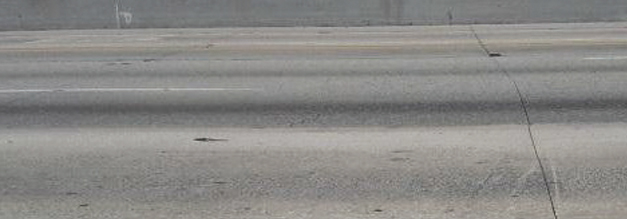
© The Georgia Institute of Technology
Figure 10. A close-up view of pavement slabs on I-10E near Los Angeles, CA, shows deterioration after 15 years.
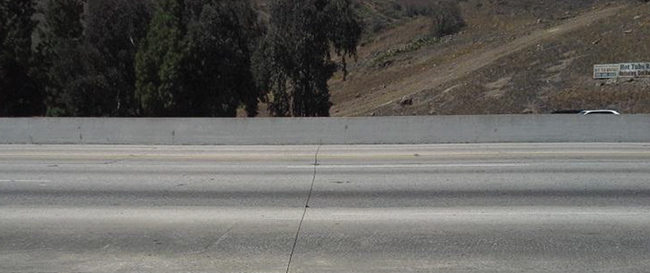
© The Georgia Institute of Technology
Figure 11. Pavement slabs on I-10E near Los Angeles, CA, shows deterioration after 15 years.
California State Route 60
Sixty-four km (40 mi) of the Pomona Highway (California SR 60) between California State Route 57 and California Interstate 605 (I-605) were constructed in 2012 using a 100-percent CSA binder. Figures 12 and 13 show the condition of the pavement. Pavement was placed in both the eastbound and westbound directions over new base material, with the pavement designed for higher traffic loads constructed with an increased slab thickness and doweled joints. Similar to what was seen with the Route 60E to 71N interchange, the surface of this pavement was intentionally ground after placement because of pavement irregularities observed during placement. Despite its short time in service and improved design, the research team observed some spalling at joints, extensive longitudinal cracking, and corner cracking. Patches were required in several areas.
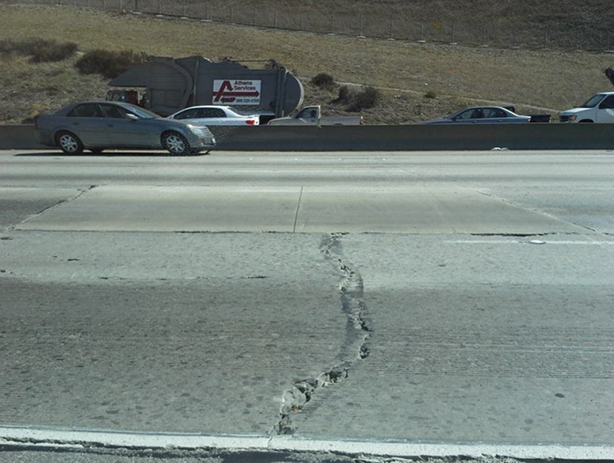
© The Georgia Institute of Technology
Figure 12. Pavement slabs on Route 60W in Los Angeles, CA, show some cracking and spalling at joints after 1 year of use.
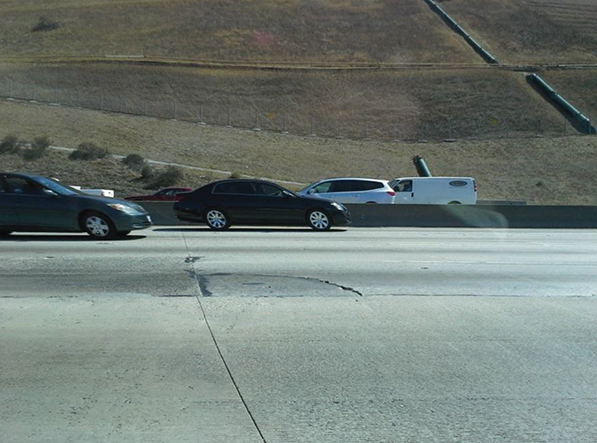
© The Georgia Institute of Technology
Figure 13. An example of pavement slabs cracking and spalling at joints after 1 year of use on Route 60W near Los Angeles, CA.